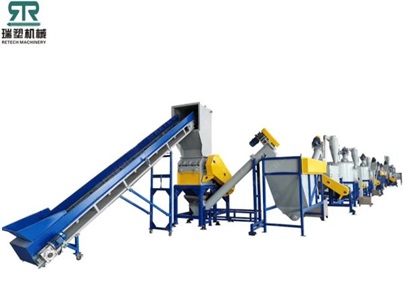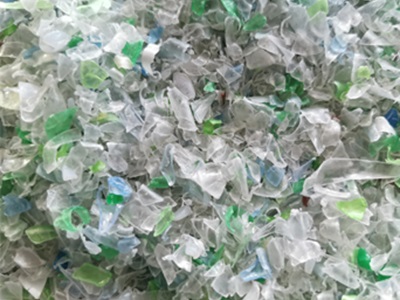In the global effort to combat plastic pollution and promote sustainability, PET (polyethylene terephthalate) bottle recycling plays a crucial role. PET bottles, commonly used for packaging beverages and personal care products, represent a significant portion of plastic waste worldwide. To address this environmental challenge, the adoption of streamlined PET bottle recycling processes, particularly through the use of washing lines, has become increasingly prevalent. In this article, we explore the importance of streamlined PET bottle recycling and the role of washing lines in enhancing efficiency and sustainability.

Before delving into the specifics of washing lines, it's essential to grasp the fundamentals of PET bottle recycling. PET is a highly recyclable plastic polymer that can be melted down and reprocessed into various new products, including bottles, textiles, and packaging materials. Recycling PET bottles not only conserves valuable resources but also reduces the amount of plastic waste that ends up in landfills or pollutes the environment.
Traditional methods of PET bottle recycling often involve multiple stages, including collection, sorting, shredding, washing, and pelletizing. While each step is essential for ensuring the quality and purity of the recycled material, inefficiencies in the process can result in increased costs, energy consumption, and environmental impact. Streamlining these processes is therefore critical to improving overall efficiency and maximizing the environmental benefits of PET bottle recycling.
Washing lines are a key component of streamlined PET bottle recycling systems, designed to thoroughly clean and prepare the bottles for subsequent processing. These automated systems utilize a series of mechanical and chemical treatments to remove contaminants such as labels, caps, adhesives, and residues from the surface of the bottles. By effectively cleansing the bottles, washing lines help maintain the integrity and quality of the recycled PET material, ensuring it meets the stringent standards required for various end-use applications.
Mechanical cleaning processes form the foundation of washing lines, utilizing high-pressure water jets, friction, and agitation to dislodge and remove surface contaminants from the PET bottles. In the initial stages of washing, bottles undergo pre-treatment to remove larger debris and impurities before entering the main cleaning chamber. Inside the chamber, rotating brushes, paddles, or air knives work to scrub and rinse the bottles thoroughly, achieving a high level of cleanliness without the need for excessive water or chemical usage.
In addition to mechanical cleaning, washing lines may incorporate chemical treatment options to further enhance the cleaning efficacy and remove stubborn contaminants from the PET bottles. Common chemical agents used in PET bottle washing include detergents, alkalis, and acids, which help dissolve adhesives, oils, and other organic residues adhering to the bottle surfaces. These chemical treatments are typically applied in controlled concentrations and temperatures to ensure optimal cleaning performance while minimizing environmental impact.
The adoption of washing lines in PET bottle recycling offers numerous benefits that contribute to both environmental sustainability and economic viability.
By automating the cleaning process and minimizing manual intervention, washing lines significantly increase the throughput and efficiency of PET bottle recycling operations. This results in higher processing capacities, reduced labor costs, and faster turnaround times, enabling recyclers to meet the growing demand for recycled PET material in various industries.
Washing lines play a crucial role in maintaining the quality and purity of the recycled PET material by removing contaminants and impurities that could compromise its integrity. This ensures that the recycled PET meets the stringent specifications required for applications such as bottle-to-bottle recycling, food packaging, and textile manufacturing, enhancing market acceptance and demand for recycled PET products.
Streamlined PET bottle recycling with washing lines helps reduce the environmental impact of plastic waste by diverting it from landfills and incineration and promoting circularity in the plastics value chain. By conserving energy, reducing greenhouse gas emissions, and minimizing resource consumption compared to virgin plastic production, recycled PET contributes to mitigating climate change and conserving natural resources.

Streamlined PET bottle recycling with washing lines represents a significant advancement in sustainable waste management and resource conservation. By optimizing the cleaning process and maximizing the efficiency of PET bottle recycling operations, washing lines play a pivotal role in reducing environmental pollution, conserving valuable resources, and promoting the circular economy. As the demand for recycled PET continues to grow, investments in innovative washing line technologies will be essential to meet the challenges of plastic waste management and build a more sustainable future for generations to come.